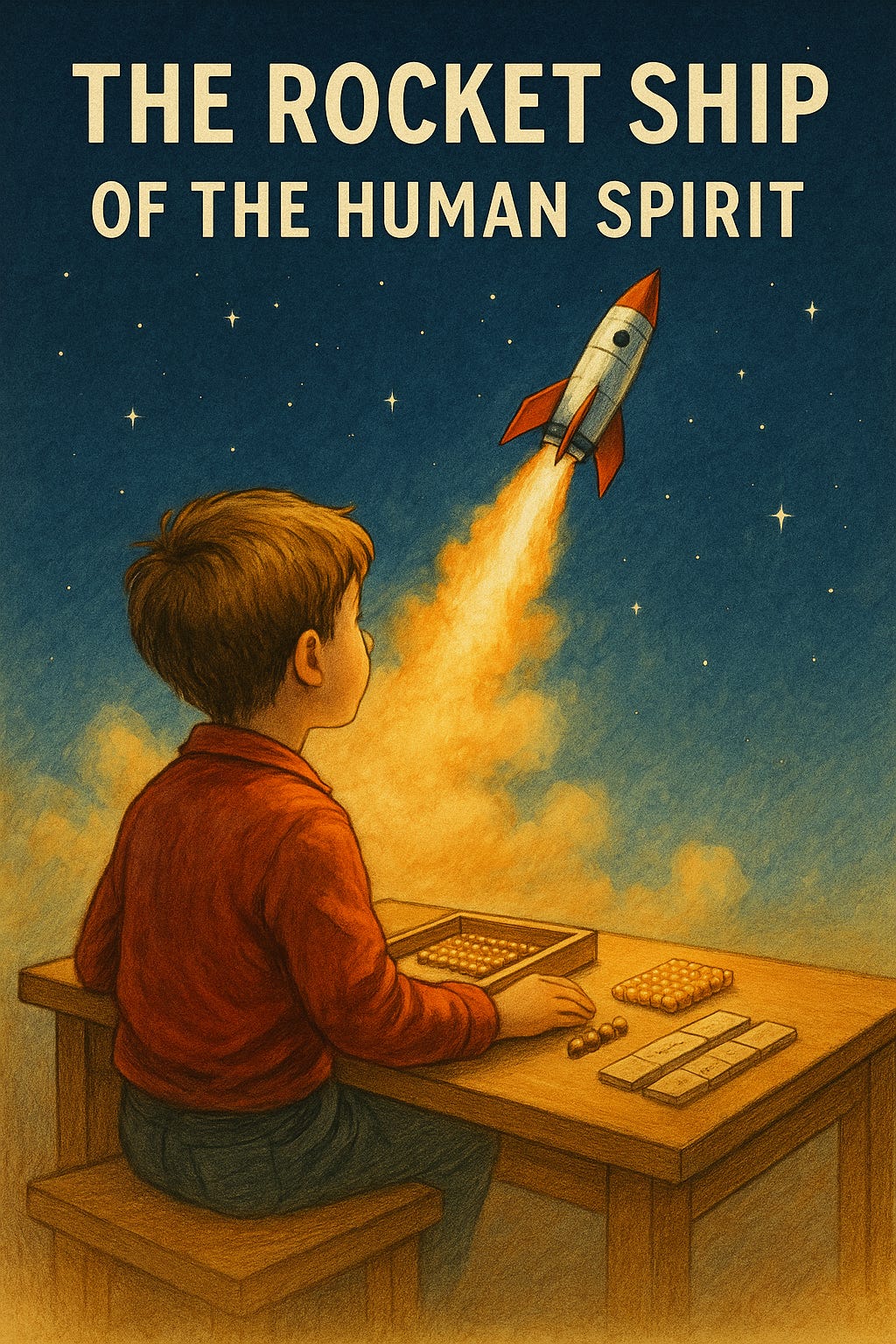I’m going to try to capture a very elusive but powerful idea. It’s a radical vision of what education can be and should be. A vision which Maria Montessori was the first to discover, but which for some reason remains out of reach for most Montessorians. It’s a vision that we’re working towards at Atlas Academy, and which we continue to approximate by degree year after year.
Discovery and Invention
It starts with the fact that, personally, I don’t think of the Montessori Method as just one approach to education, among many approaches to education.
I think of the Montessori Method as an invention—but, to be more specific, I think of it as both a discovery and an invention. The discovery is of an immense power within children; the invention is how to unleash it.
The entire Montessori Method started when Maria Montessori observed a three year old girl removing and replacing wooden cylinders into their respective slots over and over again, forty times in a row, completely ignoring the classroom around her. This was Montessori’s first glimpse of an intense mental power being unleashed through a child’s interaction with a material.
Unleashing Potential
These materials, the Montessori materials, are inventions which unleash powers of the human spirit. Typically, we think of inventions as feats of engineering like rocket ships or computers. The history of such inventions can be traced all the way back to the scientific revolution, and to the father of that revolution, Francis Bacon, who said that to invent new things, all we can do is “put together or put asunder natural bodies. The rest is done by nature working within.” So, for example, aerospace engineers put together rocket ships, which unleash the power working within jet fuel. Electrical engineers put together semiconductors, which unleash the powers working within atoms. Likewise, Maria Montessori put together her materials, which help children to unleash the powers working within themselves.
The powers working within children—this was Maria Montessori’s discovery. She discovered a hidden power in children of an intense motivation to perceive reality. This power begins in infancy with basic sense perception; an infant exerting effort to see things clearly. Then it becomes a toddler’s extraordinary effort to coordinate his movements to perform basic tasks. (Note that physical coordination is really a form of perception, of perceiving one’s movements in relation to an intention). Later, this power becomes a three year old revisiting the trinomial cube over and over again across a span of many weeks to achieve mastery. Then it becomes a Kindergartner who is self-driven to write all the numbers by fives to one thousand. Throughout these examples we see a strong motivation to perceive, which is a power residing in the soul of every child. And the Montessori materials are inventions which tap into this motivation and unleash this power.
Materials as a Lens
In this sense you can think of Montessori materials as a lens through which children can magnify their perception of some element of reality. The color tablets, which present various shades of a single color, magnify a child’s perception of shade. The golden beads, a math material, magnify the child’s perception of the decimal system. The grammar symbols magnify the child’s perception of the roles that words play in a sentence. We can ask ourselves, of each Montessori material, which element of reality does this help the children perceive?
Unity of Motivation and Learning
Children naturally want to perceive more and more of reality, and so there’s no need for a disconnect between motivation and learning. Typically we think of children as being motivated to play but not as motivated to learn. It’s an age-old problem, to try to get children to want to learn. But, Montessori discovered that, contrary to popular belief, the strongest desire in children is actually to perceive reality, i.e., to learn—to fit the cylinders in the right slot; to perceive slight variations in the shades of colors; etc. The difficulty, in part, lies in inventing materials through which children can acquire desired powers of perception. Children can sense the powers that they need, and, in a Montessori setting, they’re able to find the materials to practice such powers. When given a choice, and the right materials, we see a strong will to learn, a union of motivation and learning–one of the distinguishing features of the Montessori Method.
Rocket Ship of the Human Spirit
Now, I hope, you can start to see why I think of the Montessori Method as a marvelous invention, which unleashes a power of nature; a power which Maria Montessori was the first to discover–the power of a child’s mind motivated to perceive. Just as rocket ships are intricately designed to unleash the power of rocket fuel, so the Montessori Method is intricately designed to unleash the power of the human mind. In this sense, one can view the Montessori Method as the rocket ship of the human spirit.




